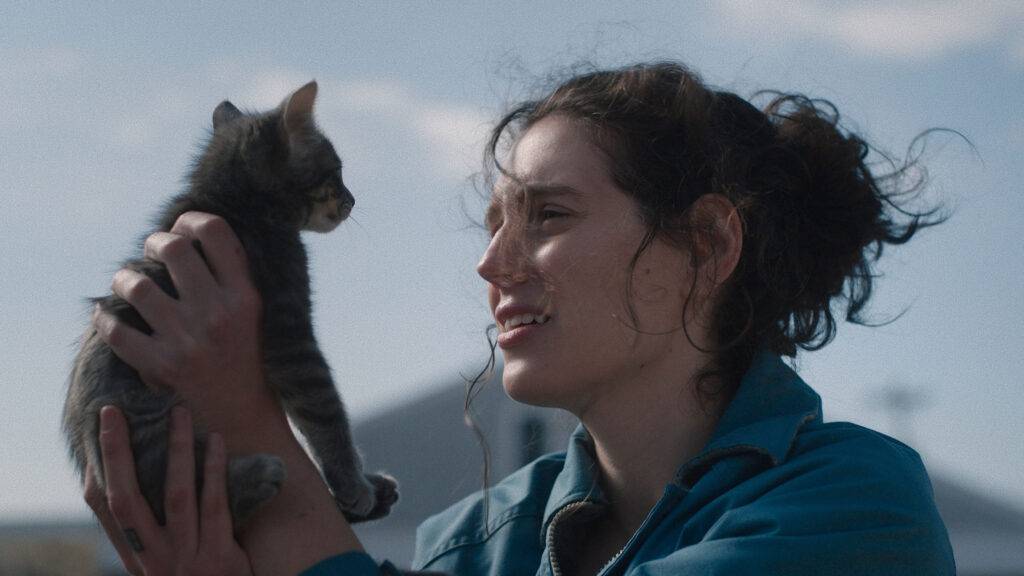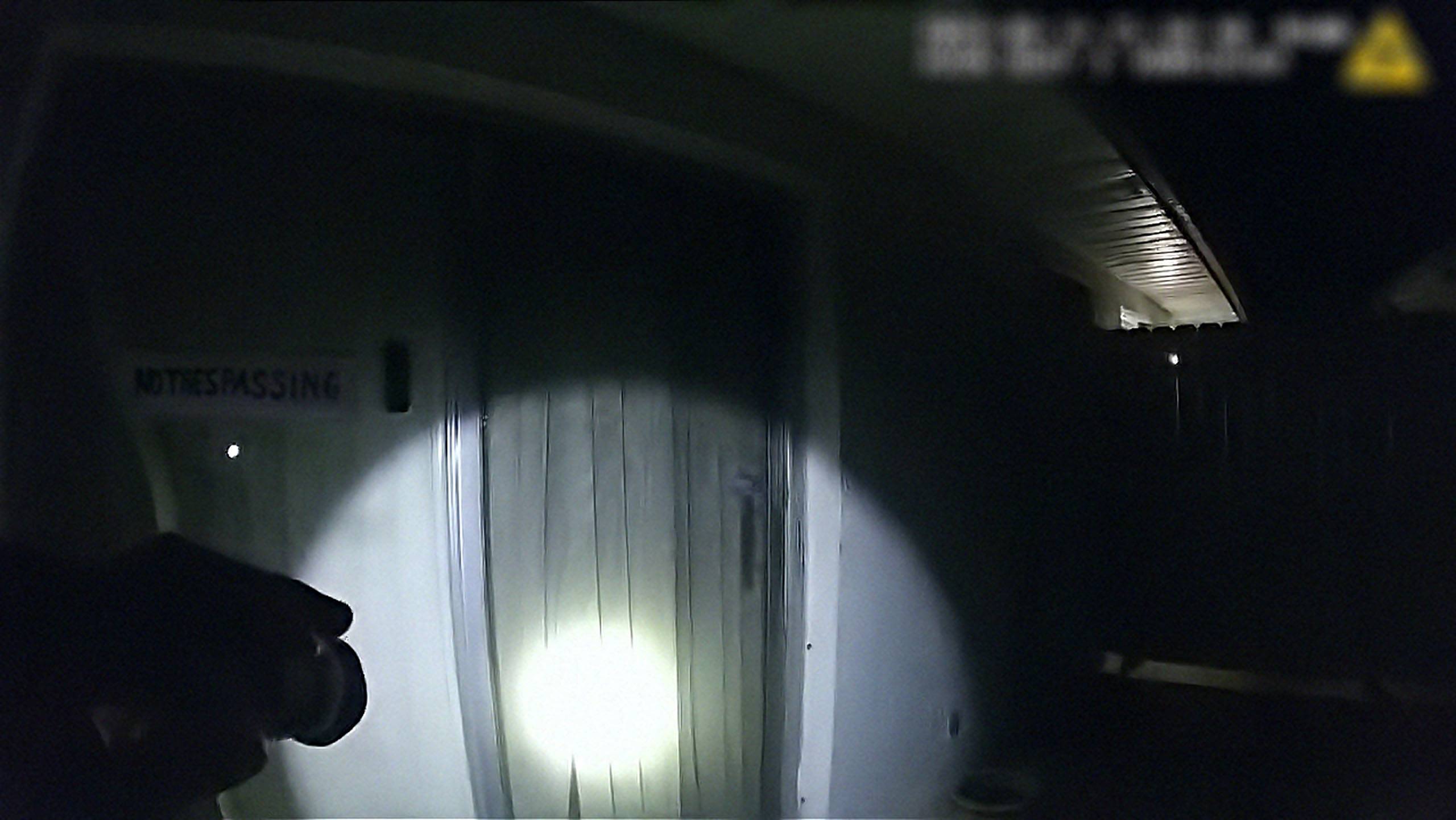Top 5 Movies from the 2025 Sundance Film Festival
Top Films from Sundance | Adam Manery | The 2025 Sundance Film Festival has officially wrapped up, and while it had its share of controversies (Blknws + Twinless, most notably), it also brought us more great indie films to watch and fall in love with. The awards have also been handed out, celebrating the best in cinematic achievements (you can read more about the award winners here). For now, though, let’s dive into some of the standout films from this year’s festival and what makes them so special.
5. Sunfish (& Other Stories on Green Lake) | Sundance U.S Dramatic Competition
Synopsis: Lives intertwine around Green Lake as a girl learns to sail, a boy fights for first chair, two sisters operate a bed-and-breakfast, and a fisherman is after the catch of his life.
Directed by: Sierra Falconer
Starring: Maren Heary, Jim Kaplan, Karsen Liotta, Dominic Bogart, Tenley Kellogg, and Emily Hall
Thoughts on Sunfish (& Other Stories on Green Lake):
Sierra Falconer’s Sunfish (& Other Stories on Green Lake) offers a quiet, almost meditative reflection on the passage of time and the unspoken bonds between people and place. The film opens gently with the sounds of a guitar and harmonica, setting the tone for a journey that is as much about the environment as it is about the people who inhabit it. Green Lake, where director Sierra Falconer spent much of her childhood, serves as a backdrop to a series of vignettes that explore different facets of life on its shores. Each chapter is linked less by plot or character, but more by the shared experience of the lake itself.
From the very beginning, we wanted the film to feel like a memory, like someone telling a story of a time from the lake. Nothing in the film should point to a particular decade or period – we wanted it to exist almost outside of time, and that’s how we designed the look. – Cinematographer Marcus Patterson
The film’s cinematography emphasizes naturalism, capturing the imperfections in everyday moments. There’s a roughness to the visuals – awkward shadows in a car ride, cluttered cups on a table – that adds to the sense of lived-in reality. When inside the lake house, shots looking outside through the large glass windows are exposed perfectly, while the characters themselves are often left in shadow, underscoring the powerful draw of the lake, and reinforcing the premise of the anthology.
Falconer and Patterson’s approach to lighting and composition, focusing on what’s real rather than idealized, invites the viewer into a world where the story is less about individual drama and more about the shared experience of a place. Though not every vignette hits equally hard, the opening and closing chapters—focused on familial ties and the relationship to the lake—are deeply resonant.
Read my full interview with the cinematographer of Sunfish (& Other Stories on Green Lake), Marcus Patterson.
4. Omaha | Sundance U.S Dramatic Competition
Synopsis: After a family tragedy, siblings Ella and Charlie are unexpectedly woken up by their dad and taken on a journey across the country, experiencing a world they’ve never seen before. As their adventure unfolds, Ella begins to understand that things might not be what they seem.
Directed by: Cole Webley
Starring: John Magaro, Molly Belle Wright, Wyatt Solis, and Talia Balsam
Thoughts on Omaha:
Set against the backdrop of the 2008 financial crisis, Omaha takes a stark, unflinching look at a family grappling with the fallout of economic collapse. From its drab, cold-toned opening, the film establishes a sense of dread and desolation. The cinematography, deliberately “ugly”, enhances the bleak atmosphere. The father, played by the brilliant John Magaro, is rarely well-lit and instead, spends much of the film sitting in the dark, unable to escape the set of circumstances that led him here.
While Omaha may be considered too “slight” for some (it has an under 90-minute runtime), it still contains meaningful emotional depth. Of course, this emotion is felt most directly through Magaro but is compounded when we see his daughter daughter blame herself for the family’s woes. This feeling of self-recrimination is something that many children of broken homes have felt, and it hits with incredible force. The film’s moments of levity – mostly around quirky “would you rather” games inevitably devolving into discussions about “poop” – contrast with the heavy subject matter, providing brief but necessary relief before the inevitable emotional weight of the story takes hold.
Magaro’s performance is a standout, conveying the quiet desperation of a father trying to do what he thinks is right. Omaha may be difficult to watch at times, but it’s a raw, affecting exploration of family, failure, and self-doubt in the face of ruin.
3. Plainclothes | Sundance U.S Dramatic Competition
*Winner of the US Dramatic Special Jury Award for Ensemble Cast*
Synopsis: A promising undercover officer assigned to lure and arrest gay men defies orders when he falls in love with a target.
Directed by: Carmen Emmi
Starring: Tom Blyth, Russell Tovey, Maria Dizzia, Christian Cooke, Gabe Fazio, and Amy Forsyth
Thoughts on Plainclothes:
Plainclothes employs several bold and out-of-the-box visual techniques, including the incorporation of the Sony hi-8 Camcorder, and the use of zooms to mirror the protagonist’s inner turmoil. These choices give the film an intimate, almost voyeuristic feel as it follows a young cop, Lucas, assigned to a sting operation arresting gay men at a mall in Syracuse, New York. Lucas’ journey is one of self-discovery, as he grapples with his attraction to men while maintaining a façade of normalcy for his family and colleagues.
The idea was to mix Hi-8 video, which is very lo-fi and pixelated, to create this mosaic of textures that reflected not only Lucas, the main character’s, emotional state and anxiety, but also served as a nod to the ’90s and the evolving technology of the time—the rapid rise of digital in that decade. – Cinematographer, Ethan Palmer
The film’s editing is intentionally jumpy, a decision that may jar some viewers but effectively conveys our protagonist, Lucas (played by Tom Blyth) fragmented, spiraling emotions. His chemistry with Andrew (played by Russell Tovey), a charismatic older man who briefly draws Blyth into his world, is palpable, and both actors deliver sensitive, nuanced performances.
Plainclothes explores some of the complexities of queer identity in the 90s, reflecting the isolation and secrecy many queer men had to navigate. The film is deeply empathetic, offering insight into the internal conflicts of its characters without judgment. Ultimately, the raw performances and visual storytelling make Plainclothes a compelling watch, and a festival stand out.
Read my full interview with the cinematographer of Plainclothes, Ethan Palmer.
2. The Perfect Neighbor | Sundance U.S Documentary Competition
*Winner of the Directing Award: US Documentary*
Synopsis: A seemingly minor neighborhood dispute in Florida escalates into deadly violence. Police bodycam footage and investigative interviews expose the consequences of Florida’s “stand your ground” laws.
Directed by: Geeta Gandbhir
Thoughts on The Perfect Neighbor:
The Perfect Neighbor opens with an intense and jarring 911 call, immediately immersing the audience in the high-stakes drama of a neighborhood crisis. The decision to juxtapose these moments with brief, still shots – such as a basketball hoop or a mailbox – brings such an effective balance of intensity and softness. These locked-off shots, some of the few specifically filmed for the documentary, offer a rare breath in an otherwise relentless narrative. As the audience is propelled back into the emotional turmoil of the situation, these moments of stillness serve as critical pauses, allowing us to process the raw emotions without feeling overwhelmed.
Really, Geeta Gandbhir’s direction is nothing short of a masterclass in tension building. She effectively uses real body cam footage and news segments, crafting a compelling narrative that keeps us on the edge of our seats without relying on the overly polished aesthetics of typical “true crime” documentaries. Without the need for traditional voiceovers or excessive cinematic style, the focus remains firmly on the story. It’s a lesson to all future filmmakers that you don’t need a Netflix production to craft a compelling narrative. It’s less about getting that perfect “talking head” footage with the perfect depth of field and more about the story being told.
The neighborhood itself emerges as a character, its pulse and reactions shaping the course of the film. The children deliver memorable line after memorable line, like “She thinks we’re trying to steal her truck. We’re 11!” which reminds us of the childhood innocence that is crucial to remember as we dive deeper into the relationships of the neighborhood. The Perfect Neighbor squeezes out every last drop of what it has been given, and it’s a project that is deserving of tremendous praise.
1. Sorry, Baby | Sundance U.S Dramatic Competition
*Winner of the Waldo Salt Screenwriting Award: US Dramatic*
Synopsis: Something bad happened to Agnes. But life goes on… for everyone around her, at least.

Directed by: Eva Victor
Starring: Eva Victor, Naomi Ackie, Lucas Hedges, John Carroll Lynch, Louis Cancelmi, Kelly McCormack
Thoughts on Sorry, Baby:
Eva Victor’s Sorry, Baby marks an impressive debut, offering a dark yet witty exploration of trauma, identity, and social expectations. From the opening shot, where Agnes’ house is framed in the distance, almost dwarfed by the vast emptiness surrounding it, the film establishes a sense of isolation. These choices by Victor and DP Mia Cioffi Henry set the stage for a character whose life seems to be swallowed by the enormity of the world around her.
For this film, inspiration came from Kelly Reichardt‘s film, Certain Women. There was something about the pensive nature of these women and the heartbreak each goes through, being able to see it coming, but hurting nonetheless. We would call upon that, recognizing certain emotional cores. Every once in a while, we’d say, “That’s exactly what we wanted, and we got it.” – Cinematographer, Mia Cioffi Henry
Victor’s sharp script takes a no-holds-barred look at modern womanhood, dismantling social tropes with pointed commentary. The pacing, slow at times, allows the film to delve into uncomfortable, often painful moments. A particularly haunting sequence involves Agnes explaining the “something bad” to a friend (played by Naomi Ackie) while the camera remains locked in place, forcing the audience to stay in the moment with her. This unflinching approach creates an atmosphere where escape is impossible – not just for the character, but for the viewer as well.
Again, Victor’s ability to balance humour and despair is one of the film’s strongest aspects. It’s dark and depressing, but also deeply funny in its critique of systems and behaviors we seem to give our tacit consent to. Lucas Hedges, in a supporting role, offers a grounded, subtle performance that adds depth to the film’s exploration of emotional vulnerability. Ultimately, Sorry, Baby is a striking, bold debut, and if this is any indication, Eva Victor is a filmmaker to watch. | Top Films from Sundance | Adam Manery
Read my full interview with the cinematographer of Sorry, Baby – Mia Cioffi Henry.
Read More:





Pingback: Cinematographer Ethan Palmer on PLAINCLOTHES Movie